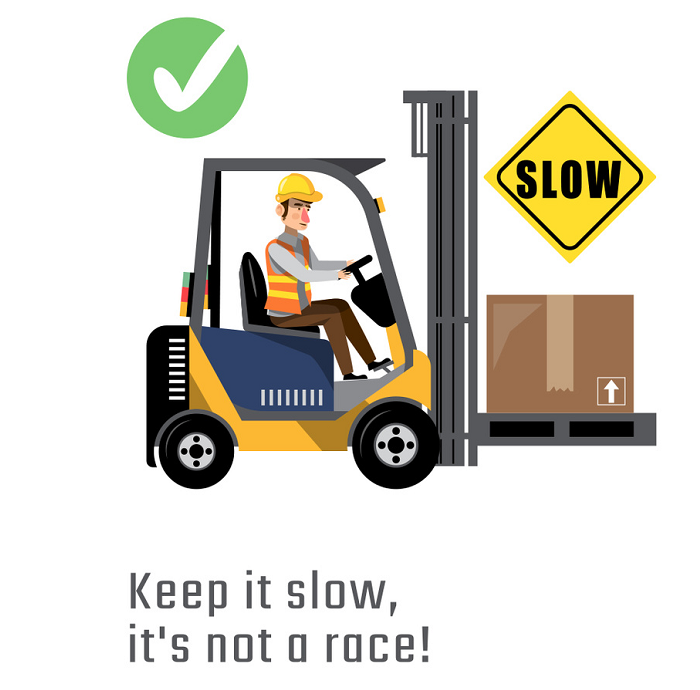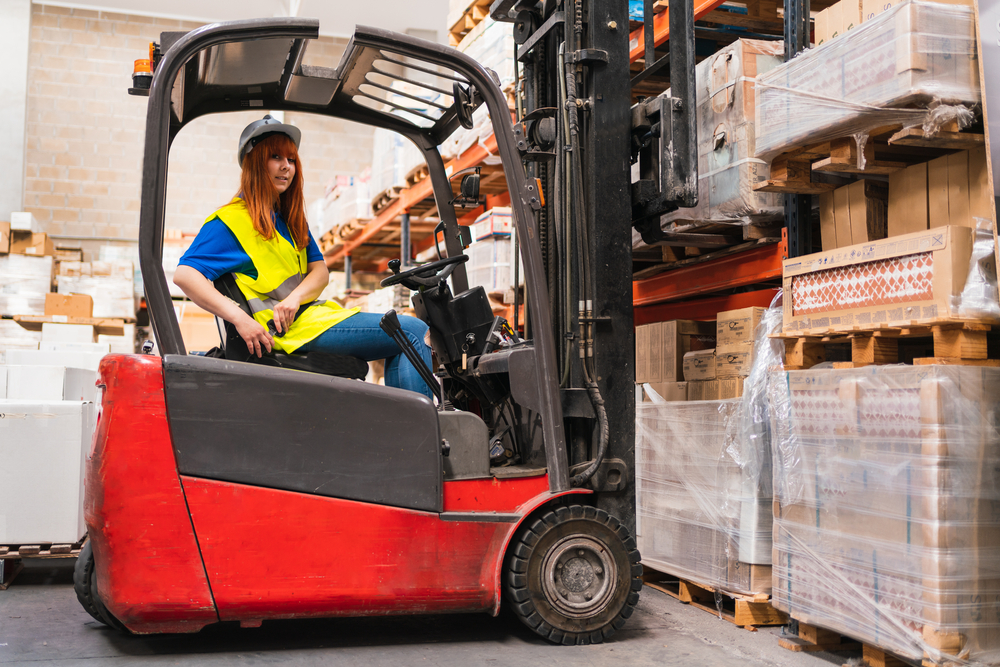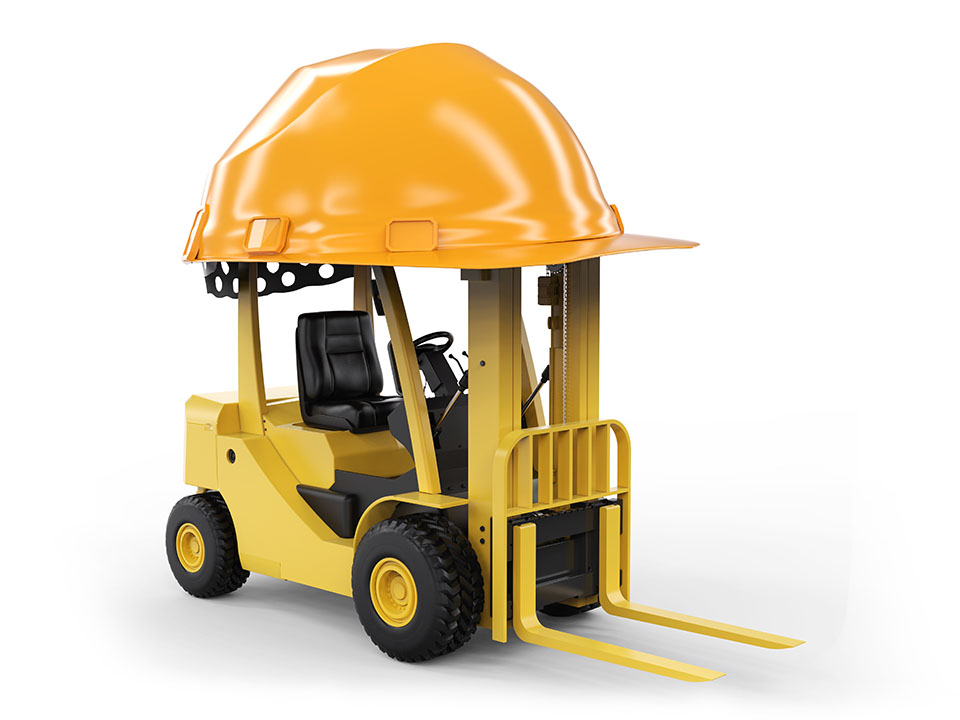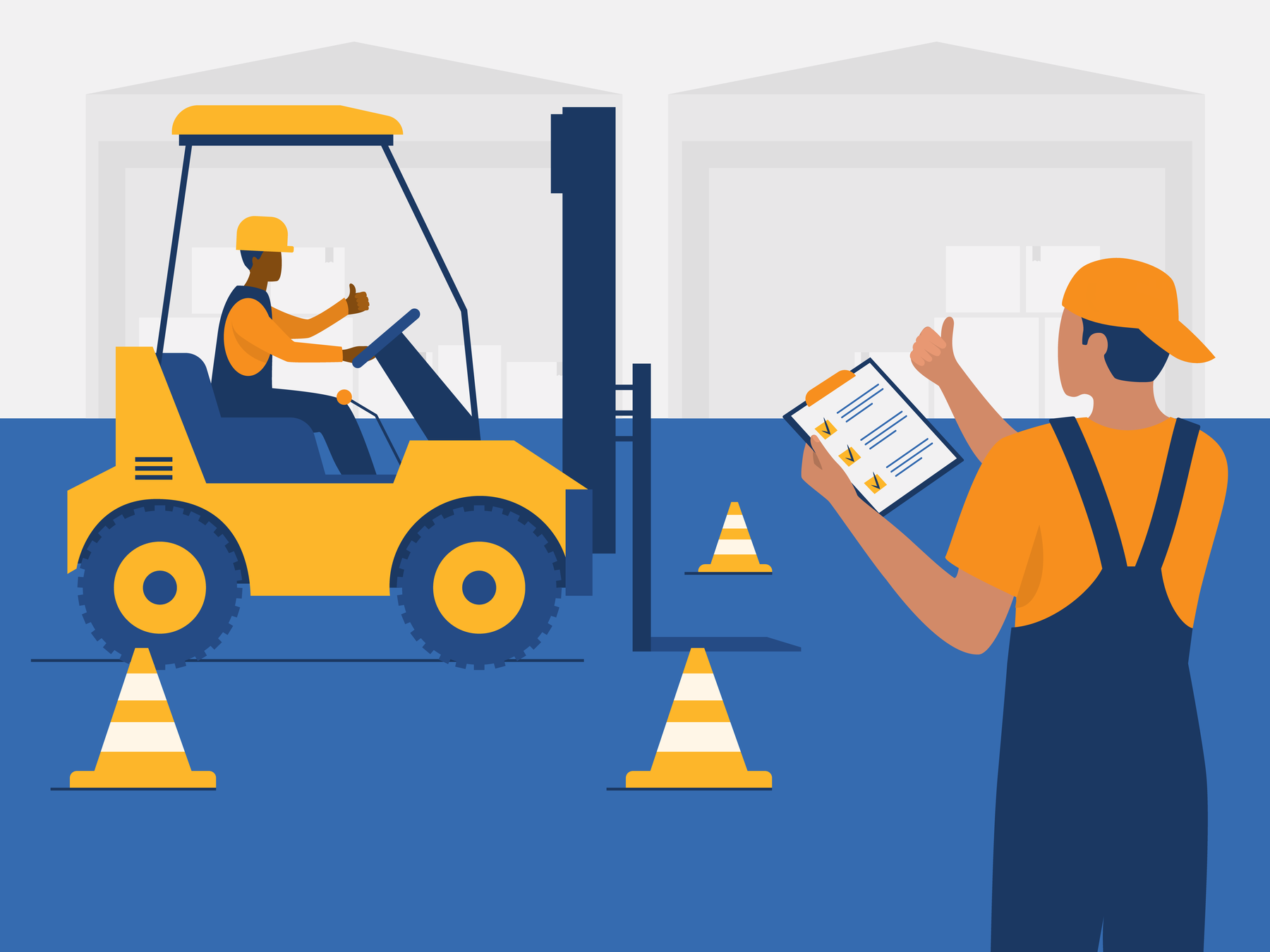Welcome to Upright Forklift Repair, the premier provider of forklift safety parts and services in Houston, TX, and Humble. Specializing in the repair, service, and provision of spare parts for forklifts, our mission is to ensure the safety and efficiency of your operations. Forklift safety is at the heart of what we do.

With years of experience and a team of expert technicians, we’re your local go-to for reliable forklift solutions. Whether you need comprehensive repairs or specific safety components, Upright Forklift Repair is dedicated to serving our community with integrity and professionalism. Discover the difference that comes with partnering with true safety experts.
The Importance of Forklift Safety in Today’s Workplace
Forklift safety is a critical component of modern workplace safety. With the extensive use of forklifts across various industries, ensuring the safety of operators and workers is paramount. Proper safety equipment and training can significantly reduce the risk of accidents and injuries.
Forklift operators, equipped with the right safety equipment, can perform their duties more efficiently and securely. Emphasizing forklift safety not only protects individuals but also enhances overall workplace productivity and morale. By prioritizing safety equipment and best practices, businesses can foster a safer, more compliant, and effective working environment.
Understanding Forklift Safety Parts: The Essentials
Forklift safety parts are essential components designed to protect operators and ensure the safe operation of forklifts. Key safety parts include the overhead guard and load backrest, which are crucial for preventing accidents and injuries. The overhead guard is designed to protect the operator from falling objects, while the load backrest secures the load on the forks, preventing it from shifting towards the operator.
These components, along with other safety equipment, play a vital role in minimizing the risk associated with forklift operation. Understanding and maintaining these essential safety parts are fundamental to fostering a safe working environment and ensuring the longevity and efficiency of your forklift fleet.
Forklift Seat Belts: A Lifesaving Necessity
Forklift seat belts are more than a mere accessory; they are a critical safety feature that can mean the difference between life and death. The operator’s seat is a zone of control but also vulnerability if safety measures are not strictly adhered to. Forklift seat belts ensure that the operator remains securely seated in the event of a tip-over, one of the most common and dangerous accidents.
By preventing operators from being thrown from their seat or attempting to jump out, seat belts significantly reduce the risk of injury. Ignoring this safety protocol is not an option; the simple act of buckling up can save lives.
Steering Your Way to Safety: The Critical Role of Steering Wheels and Tires
The steering wheel and tires of a forklift play pivotal roles in the safe operation of this heavy machinery. Proper steering control and tire maintenance are essential for ensuring the forklift operates smoothly and safely, minimizing the risk of accidents. The steering wheel provides the operator with the necessary control to maneuver the forklift through tight spaces and around obstacles, while the condition of the forklift tires—drive wheels and drive tires—affects the forklift’s stability, traction, and braking.

Worn or improperly maintained tires can lead to slips, tip-overs, and collisions. Regular checks and maintenance of the steering system and tires are critical for safe forklift operation, ensuring that every movement is precise and every turn is made with confidence.
Ensuring Balance and Stability: Counterbalance Forklifts and Their Components
Counterbalance forklifts are ingeniously designed to balance the load being lifted with the weight of the forklift itself, primarily using a counterweight within the truck’s rear. Key components such as the forklift mast, steer wheels, and capacity plate play significant roles in ensuring the forklift’s balance and stability during operations.
The mast must be robust enough to lift and lower loads efficiently, while the steer wheels provide the necessary maneuverability without compromising the forklift’s stability. The capacity plate contains vital information regarding the forklift’s maximum lifting capacity and must be adhered to prevent overloading. These elements work in concert to maintain the counterbalance forklift’s equilibrium, ensuring safe and efficient handling of materials.
The Heart of the Forklift: Understanding Toyota Forklifts and Their Major Parts
Toyota Forklifts are renowned for their reliability, durability, and advanced technology, making them a leading choice in material handling operations worldwide. At the core of these machines are several major components that ensure their optimal performance. The forklift data plate provides essential information such as the model, weight capacity, and serial number, guiding operators to use the forklift within its operational limits.

Forklift attachments enhance the versatility of Toyota Forklifts, allowing them to handle a variety of tasks and materials efficiently. Furthermore, the power source, whether electric, diesel, or gas, plays a crucial role in determining the forklift’s suitability for different work environments. Understanding these key components of Toyota Forklifts can help operators maximize their efficiency and safety on the job.
Enhancing Forklift Operations with Safety Equipment
Safety equipment is paramount in enhancing the operational efficiency and safety of forklift operations. Red zone lights and blue lights are innovative safety features that alert pedestrians and other workers to the presence of an active forklift, reducing the risk of collisions in busy or poorly lit areas. These lights create visible boundaries around the forklift, indicating safe distances for on-foot workers.
Moreover, ensuring proper overhead clearance is crucial to prevent accidents involving overhead obstacles. This not only protects the structural integrity of the forklift and its load but also safeguards the operator and surrounding workers from potential hazards. Integrating these safety equipments into forklift operations significantly contributes to a safer workplace.
The Operator’s Domain: Ensuring Forklift Operator Safety
The operator’s seat of a forklift is a critical domain where safety must be paramount. Ensuring the safety of the forklift operator involves several key factors, including the use of a seat belt, the proper adjustment and use of the parking brake, and theergonomic design of the operator’s seat. The seat belt is a simple yet crucial safety device that protects the operator in case of a tip-over accident.
The parking brake ensures the forklift remains stationary during loading and unloading operations, preventing unintended movement. Lastly, an ergonomically designed operator’s seat reduces the risk of fatigue and strain, allowing for better control and focus. Together, these elements contribute significantly to the overall safety and efficiency of forklift operations.
Forklift Attachments and Accessories: Extending Your Forklift’s Capabilities
Forklift attachments and accessories are essential tools that significantly extend the capabilities and efficiency of your forklifts. From fork positioners that allow operators to adjust the distance between the forks quickly to handle different sizes of loads, to slip sheets which facilitate the transport of goods without pallets, these add-ons enhance versatility and productivity.
Accessories such as side shifters, clamp attachments, and extensions provide additional functionality, making forklifts adaptable to a variety of tasks beyond simple lifting and moving. Incorporating these attachments into your forklift operations can lead to more efficient material handling, reduced workload, and an overall increase in workplace productivity. Embracing these innovations ensures that your forklift can meet the diverse needs of modern warehouses and distribution centers.
Maximizing Safety and Efficiency: The Role of Lift Capacity and Free Lift
Understanding the lifting capacity and free lift of a forklift is crucial for maximizing both safety and efficiency in material handling operations. The lifting capacity indicates the maximum weight a forklift can safely lift, while the free lift refers to the height a forklift can raise its load without altering the mast’s height, crucial in low-clearance situations.

A well-designed load backrest and maintaining loads at a fixed position are essential for ensuring the load’s stability and preventing shifts that could lead to accidents. Adhering to these specifications not only ensures the safety of the operator and the integrity of the load but also contributes to the smooth operation of warehouse activities.
Forklift Maintenance and Repair: Ensuring Longevity and Safety
Regular forklift maintenance and timely forklift brake repair are essential for ensuring the longevity and safety of your equipment. Upright Forklift Repair specializes in providing top-notch service, spare parts, and maintenance for all types of forklifts, including expert forklift brake repair. Proper maintenance involves routine checks of the engine, hydraulic systems, brakes, and electrical systems to prevent breakdowns and extend the lifespan of the forklift.
Additionally, immediate repair of any wear and tear or damage ensures that the forklift operates safely, protecting operators and materials alike. By partnering with a reputable repair service like Upright Forklift Repair, you can ensure your forklifts remain in optimal condition, reducing downtime and promoting a safer, more productive workplace.
Optimizing Operations with Counterbalance and Toyota Forklifts
Counterbalance forklifts and Toyota forklifts stand at the forefront of warehouse operations, offering unparalleled balance and efficiency. The counterbalance design, crucial for stability, allows forklifts to handle heavy loads with ease, while Toyota’s innovative engineering ensures reliability and performance. These forklifts, equipped with robust engines and advanced data plates containing essential specifications, are designed to operate smoothly on any flat surface, making them versatile tools in any inventory management system.
Enhancing Safety with Forklift Features
Safety in material handling is paramount, and features like the overhead guard and tilt cylinder in forklifts play a critical role in protecting operators. The overhead guard is a key safety element, shielding the operator from falling objects, while the tilt cylinder allows precise control of the load, enhancing stability.
Additionally, sliding rails and the use of slip sheets further improve the safety and efficiency of forklift operations, ensuring smooth handling and transport of goods.
The Backbone of Material Handling: Forklift Mast and Engine
The forklift mast and engine are the backbone of any forklift truck, providing the necessary lifting capacity and power to move heavy loads. The mast’s design, featuring two sliding rails, allows for easy lifting and lowering, adapting to various load types and sizes.
Paired with a powerful engine, these forklifts are equipped to lift and transport materials across different terrains, making them essential in the most common types of material handling tasks. Whether operating in a warehouse or on a construction site, the combination of a strong mast and efficient engine ensures maximum productivity and longevity.
Navigating Forward with Precision and Safety
In the realm of material handling, the ability to navigate a fork truck forward and backward with precision is critical. Equipped with advanced lighting systems, these forklifts ensure clear visibility, whether moving towards a pallet or positioning a load on a slip sheet for transport. The integration of front and rear lights enhances safety, guiding operators through tight spaces and ensuring a smooth journey from one point to another.
The Essential Role of Counterweights in Material Handling
Counterweights are the unsung heroes of fork trucks, providing the necessary balance for lifts to carry heavy loads securely. This essential component allows forklifts to lift and move pallets safely, ensuring the machine’s stability by counterbalancing the weight of the load at the front with the counterweight at the rear. Whether lifting materials to greater heights or transporting them across a facility, the counterweight ensures every operation is conducted safely and efficiently.
Maximizing Efficiency with Slip Sheets and Pallets
In today’s fast-paced logistics environments, maximizing loading and unloading efficiency is paramount. Fork trucks, designed to operate seamlessly with both pallets and slip sheets, offer versatile solutions for material handling. Slip sheets provide a lightweight and cost-effective alternative to pallets, facilitating easy transfer and storage of goods.
Whether moving forwards with a loaded pallet or utilizing slip sheets for streamlined operations, forklifts are equipped to handle diverse loading requirements, illuminating the path to enhanced operational efficiency with their integrated lights.
